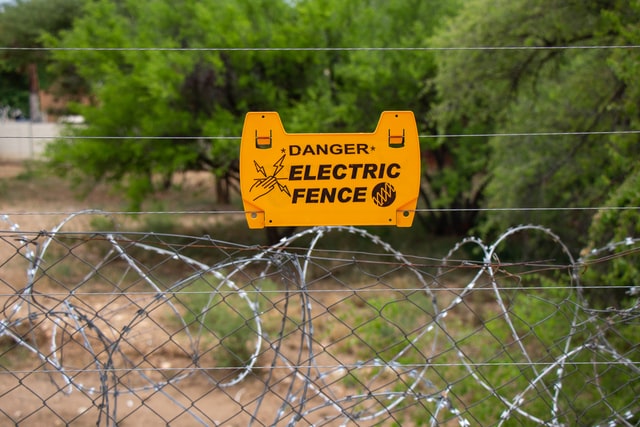Having an electric fence on your farm can be extremely beneficial for both you and your livestock, as long as it is installed correctly. Not only does having an electric fence keep your livestock safe and contained in one area, but it also deters other wild animals or intruders from entering your fields or farm and keeps them away from your livestock. If you are considering getting an electric fence for your farm, then here is a guide on what is involved in relation to the successful and correct installation of an electric fence.
Plan your layout
When it comes to installing an electric fence on your farm the first basic step that you must take is to plan your layout. When it comes to planning the layout for your new electric fence, you must decide how much of your farm that you want the electric fence to cover and how big you want the enclosure for your livestock to be. It is extremely important that you plan the layout for your new electric fence before you install it as it will determine what type of energiser that you buy and how much wire or tape you will need to get. Getting it wrong at the planning stage could prove very costly. Remember, an electric fence system consists of a number of components, an electric fence energiser , electric fence wire/tape or a combination supported on insulators, and posts. These together with an earth system, form a pulsed high voltage open loop that the animal completes if it comes into contact with it.
Install all corner and end posts
Once you have planned the layout for your electric fence, it is now time for you to install all of the corner and end posts. These posts are a vital part of electric fencing as they are what support and hold the electric wire in place. When it comes to choosing the type of post that you should use for your new electric fence, wooden stakes work the best as they are strong and durable as well as not being a conductor. Treated and maintained properly and regularly, wooden stakes can also withstand extreme weather conditions, meaning that as long as it is installed properly your electric fence will stay in place on your farm no matter what the weather or conditions are like.
Choose an energiser and wire
Now that you have correctly installed all of the corner and end posts, you can now choose the type of energiser and wire that you want to use for your electric fence. An electric fence energiser converts mains or battery power into a high voltage pulse. The energiser releases this pulse on to an insulated fence line about once every second and it is this piece of equipment that produces the controlled ‘shock’ when the wire it touched. It is important that you choose an energiser and wire that is suitable to your farm, the purpose of the fence, and the layout that you have previously planned out.
The size of the layout for your electric fence will determine what type of electric fence energiser that you go for. Different electric fence energisers are designed to cover different distances. Therefore, it is important that you choose the electric fence energiser that is exactly suitable for the distance that your new fence is going to cover. If you choose the wrong electric fence energiser, it will not cover the full distance of your electric fence and be ineffective. As well as choosing the energiser, it is also important that you choose a wire that is suitable for your fence. There is a wide variety of electric fence wire and tape available for you to choose from – for example, electric rope, electric tape, polywire and stranded galvanised wire. Each has strengths and weaknesses and you should make sure that you evaluate all your requirements against the options available.
Set the fence up
Once you have selected the right combination of electric fence components for your fence, you can now begin setting up the electric fence on your farm. You should start by setting up your electric fence energiser in a safe and secure place, away from your livestock. You should make sure that the electric fence energiser is covered to prevent it from getting damaged by any weather conditions.
When you have set up the electric fence energiser, you must turn it off before you begin to set up the electric wire. You can then begin to guide the wire along the perimeter of your planned layout, making sure that you wrap the wire around each corner and end post securely. In order to prevent the electric wire from becoming loose you must make sure that you pull the wire tightly, making sure it is taut between each corner and end post. Once you have the wire in place, you can now turn on the electric fence energiser.
Hopefully, you now have a good idea of what it takes to install an electric fence safely and correctly.
